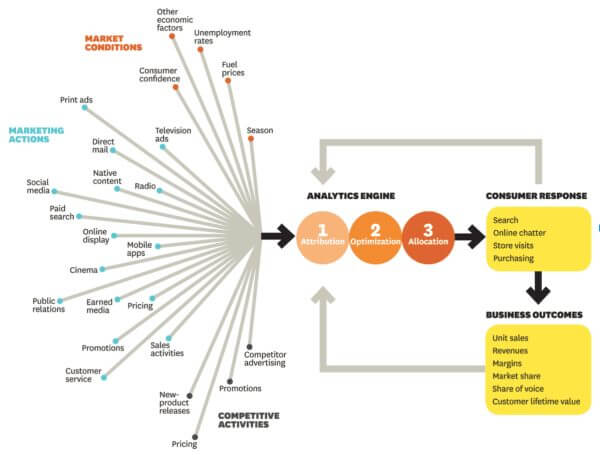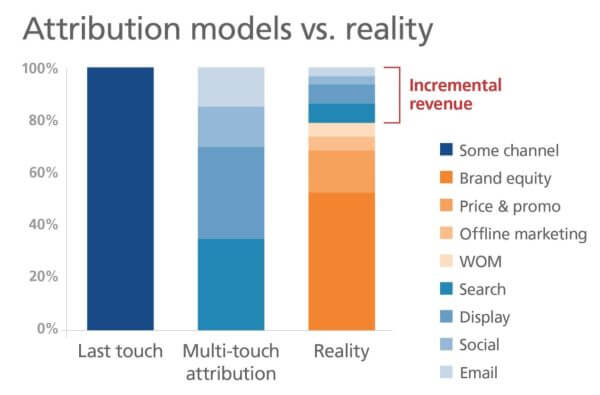When attempting to run a successful marketing campaign in the modern world, nothing is more important than effective data analytics. However, even if you gather comprehensive data to track website visitors and monitor their behaviour, determining which actions contributed to a conversion can be very difficult. Attribution modeling seeks to quantify the value of a customer’s impressions and actions throughout the digital purchasing funnel to help allocate commissions and budgets in accordance with how each area is performing. Although you can never expect your attribution models to be perfect, avoiding some of the most common attribution modeling mistakes will help you to achieve success.

- Discounting the Importance of Attribution Modeling
It may be true that it is impossible to develop perfect attribution models, but models that are nearly perfect can be developed with enough time and effort. Unfortunately, some marketers are led to believe that attribution modeling can be avoided or that rough models are sufficient. You cannot expect to understand where your return on investment is coming from when you do not invest resources into developing attribution models that track the relative importance of each area in the purchasing funnel.
Failing to develop accurate attribution models will undermine your productivity by leaving you and your team to guess which segments of your digital presence require improvement. The process of developing attribution models unveils where bottlenecks are crippling your performance while also helping you to understand why you are getting good results in some areas. Attribution models also help you to recognize when customer behaviour is changing, and this will help you to adapt faster in the rapidly evolving digital ecosystem. Attribution modeling should, therefore, always be perceived as an unavoidable priority rather than an unnecessary burden.
- Not Aligning Goals with Executive Expectations
Establishing goals is a critical prerequisite to doing almost anything in business. Without goals to guide a project toward achieving a necessary result, activities throughout a business will be disorganized and inefficient.
As with other areas of business, it is critical to ensure that attribution modeling is designed to achieve organizational objectives set by the executive team. Goals for an attribution modeling project can be set in a way that helps your brand’s digital presence to achieve executive expectations. The best way to make sure that your attribution modeling activities are aligned with executive expectations is to go through the list of organizational goals to brainstorm how attribution modeling could help to achieve these objectives. For example, if your executive team has set a goal of nurturing long-term relationships with clients, you could assign more weight to behaviours indicative of engagement on a regular basis. You should also make sure that you modify your attribution model whenever your company’s executive team changes organizational goals.
- Not Modeling to Understand Return on Investment
The wide array of strategies that can be used for attribution modeling can sometimes deceive you into prioritizing abstract activities that are not aligned with achieving return on investment. The final goal of all marketing activities is to drive revenue, so attribution models should always prioritize the goal of maximizing revenue throughout the purchasing funnel.
Some marketers are intrinsically passionate about certain activities, and this may lead to biases when developing an attribution model. For example, if you are passionate about an email newsletter that you helped to create, you might make the mistake of assigning more weight to this channel because you believe in its potential. If the results you expect the email marketing campaign to achieve are still unrealized, your attribution model would be aligned with your personal feelings instead of actual return on investment.
- Relying Only on Last-Click Attribution
One of the most widespread approaches to attribution modeling is to only count activities that led to a final conversion. When last-click attribution is used by itself, it is one of the most misguided approaches to attribution modeling.
The multifaceted nature of the purchasing funnel verifies that there are many stages throughout a buyer’s journey that lead to an eventual conversion. Measuring only the last click will incentivize your marketing team to prioritize short-term results at the cost of ignoring the incremental nature of the buying cycle. Last-click attribution is especially ineffective when measuring results from repeat buyers since the catalyst of their loyalty is ignored altogether.
When developing attribution models, it is important to keep in mind that no single touchpoint is responsible for a conversion by itself. A wide variety of touchpoints throughout your digital presence likely led to a customer’s decision to purchase. Although last-click behaviours should be weighted heavily owing to the importance of a final conversion, measuring only the last point in the buying process will lead to terrible results.
- Enabling Confirmation Bias to Undermine Decision-Making
Confirmation bias sets in when you want to believe that something is true, then search for information that confirms your beliefs while ignoring contradictory data. Achieving the best results in marketing requires that you set aside your personal biases and take a rational approach to decision-making. When you are blinded by a fervent belief that something is true without deriving this assumption from real data, you will make bad decisions that will undermine organizational performance.
Attribution modeling is a key enabler of good decision-making, so it is critical to ensure that your models are not guided by your own beliefs. If you believe that something is true, you should verify your assertion through data analysis. When you have to take an educated guess, you should remain open to future data that disproves the efficacy of your initial decision. Ensuring that confirmation bias does not undermine your decision-making when developing attribution models will help you and your organization to optimize digital marketing activities in accordance with reality.
Selecting the Optimal Attribution Model

Attempting to choose the right attribution model for your organization can be challenging because contradictory interests often have to be balanced through arbitrary means. In general, the best attribution models use a multifaceted approach to measure customer activities throughout the buying cycle and retargeting customer’s purchasing journey often leads to conversion. For a business, retargeting may be all about generating ROI whereas attribution is how should you go about measuring that return.

